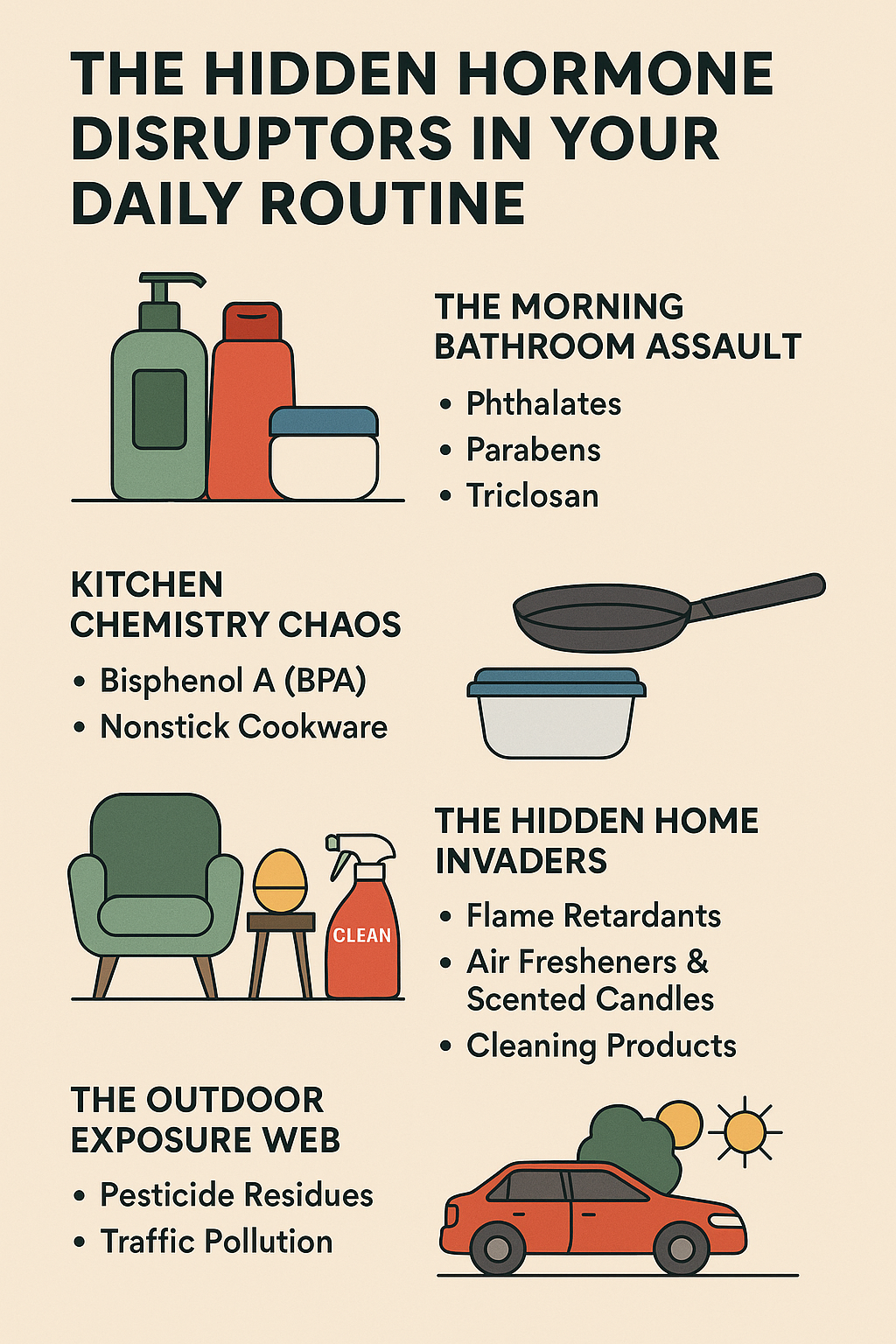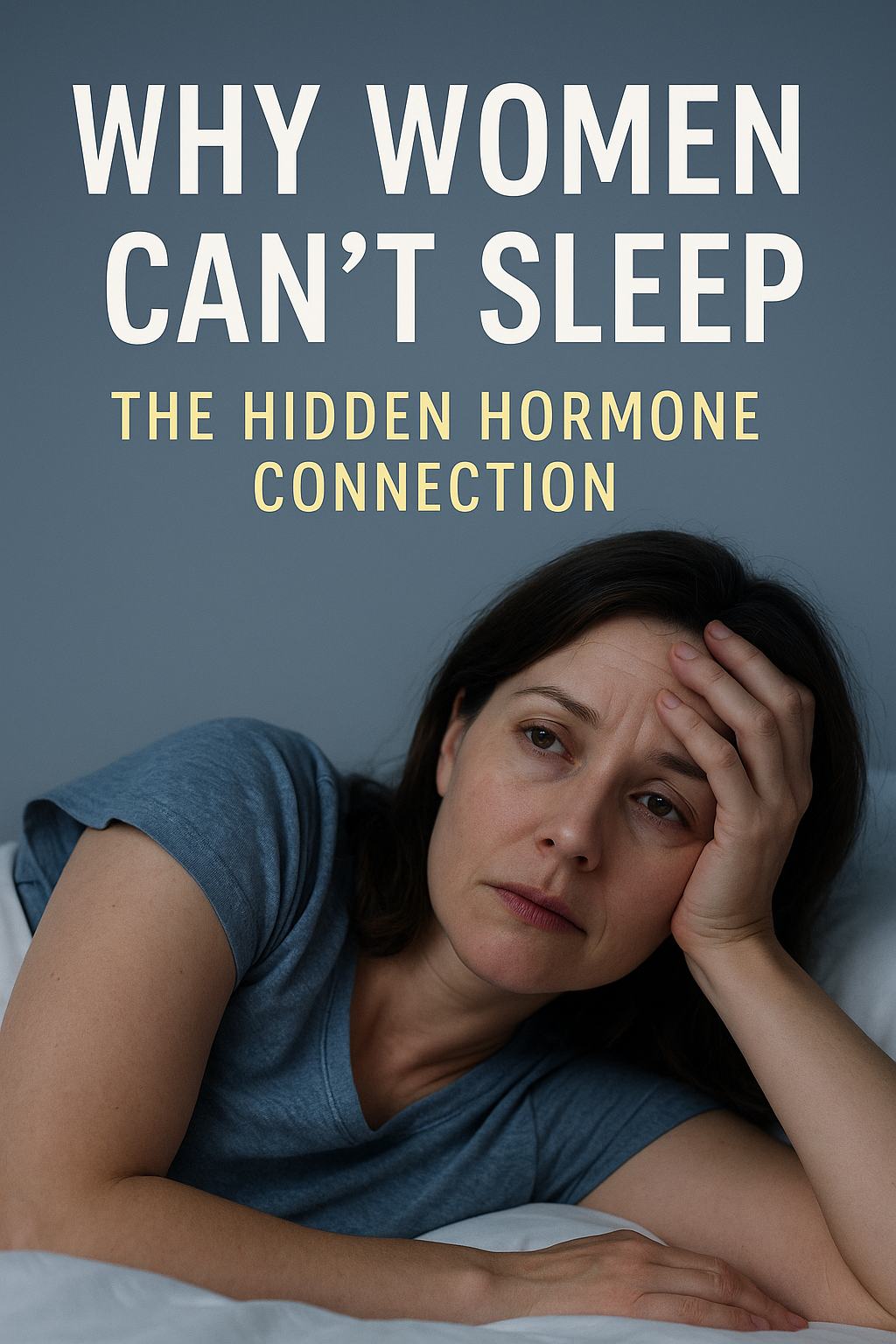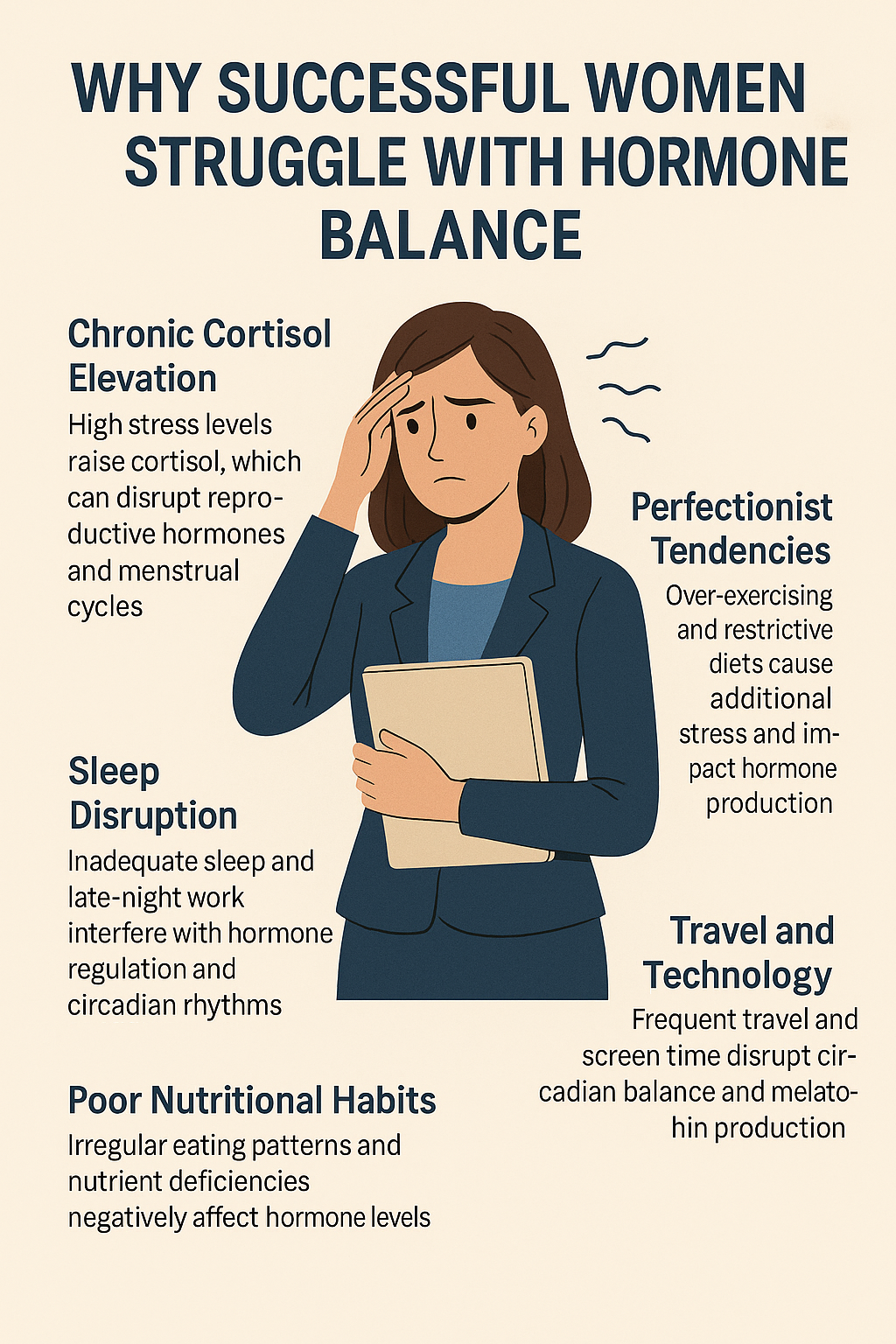
The Hidden Hormone Disruptors in Your Daily Routine
Every morning, you follow the same routine: shower with your favorite body wash, apply moisturizer, grab coffee from your go-to mug, and head out the door feeling ready to conquer the day. But what if I told you that within those first 30 minutes, you've potentially exposed yourself to dozens of chemicals that could be quietly disrupting your hormonal balance?
Hormone disruptors—also called endocrine disruptors—are chemicals that interfere with your body's delicate hormonal messaging system. Unlike obvious toxins that cause immediate symptoms, these substances work insidiously, mimicking, blocking, or altering your natural hormones in ways that can affect everything from your energy levels and mood to your metabolism and reproductive health.
The concerning reality is that many of these disruptors hide in plain sight, embedded in products we use daily without a second thought. Understanding where they lurk and how to minimize exposure can be a game-changer for your hormonal wellness.
The Morning Bathroom Assault
Your bathroom cabinet is likely ground zero for hormone disruptors. That luxurious shampoo, the anti-aging serum you swear by, and even your toothpaste may contain chemicals that your endocrine system never evolved to handle.
Phthalates are among the most pervasive culprits, used to make personal care products more pliable and to help fragrances last longer. You'll find them in everything from nail polish to body lotions, often hidden under the vague term "fragrance." These chemicals can mimic estrogen and have been linked to disrupted reproductive function and altered thyroid hormone levels.
Parabens, common preservatives in cosmetics and skincare products, can also mimic estrogen. While they prevent bacterial growth in products, studies suggest they may contribute to hormonal imbalances, particularly affecting estrogen-sensitive tissues.
Triclosan, found in antibacterial soaps and toothpastes, can interfere with thyroid hormone function. Your thyroid governs metabolism, energy levels, and body temperature regulation—disrupting it can leave you feeling sluggish and struggling with weight management.
Kitchen Chemistry Chaos
Your kitchen, the heart of nourishment, may paradoxically be serving up a side of hormone disruption with every meal. The containers, cookware, and even the food itself can be sources of endocrine-disrupting chemicals.
Bisphenol A (BPA) and its cousins BPS and BPF line many food cans and plastic containers. These chemicals can leach into food, especially when heated, and act as xenoestrogens—foreign compounds that mimic estrogen in your body. This can throw off your natural hormone balance and potentially contribute to estrogen dominance.
Nonstick cookware often contains per- and polyfluoroalkyl substances (PFAS), sometimes called "forever chemicals" because they don't break down naturally. These compounds can interfere with thyroid function and have been associated with disrupted sex hormone levels.
Even your morning coffee ritual isn't immune. Plastic coffee pods and styrene cups can release hormone-disrupting chemicals when exposed to heat. That convenient single-serve brew might come with an unwanted chemical cocktail.
The Hidden Home Invaders
Beyond the obvious suspects in your bathroom and kitchen, hormone disruptors infiltrate your home through seemingly innocent household items.
Flame retardants in furniture, carpets, and electronics can accumulate in household dust. These chemicals, designed to prevent fires, can interfere with thyroid function and reproductive hormones. Every time you vacuum or dust, you're potentially stirring up these microscopic disruptors.
Air fresheners and scented candles, while creating an inviting atmosphere, often contain synthetic fragrances with phthalates and other hormone-disrupting compounds. These chemicals become airborne and enter your system through inhalation and skin absorption.
Cleaning products present a double threat—not only do they contain hormone disruptors, but they also create chemical residues on surfaces you touch daily. Conventional dish soaps, all-purpose cleaners, and laundry detergents often contain nonylphenol ethoxylates and other compounds that can interfere with estrogen and thyroid function.
The Outdoor Exposure Web
Even when you leave your home, hormone disruptors follow you. Pesticide residues on conventionally grown produce can contain organophosphates and other chemicals that disrupt multiple hormone systems. The Environmental Working Group's "Dirty Dozen" list highlights the most contaminated fruits and vegetables, making it a valuable guide for prioritizing organic purchases.
Traffic pollution and industrial emissions add another layer of exposure. Diesel exhaust contains compounds that can interfere with reproductive hormones, while industrial chemicals can travel vast distances through air and water, creating widespread exposure even in seemingly pristine environments.
Reading Between the Label Lines
Manufacturers aren't required to list all ingredients, especially in fragrances and cleaning products. Learning to decode labels becomes crucial for hormone health. Watch for these red-flag terms:
- "Fragrance" or "parfum" (often contains phthalates)
- Ingredients ending in "-paraben" (methylparaben, propylparaben, etc.)
- "Antibacterial" claims (may contain triclosan)
- Recycling codes 3, 6, and 7 on plastics (higher likelihood of hormone disruptors)
Small Swaps, Big Impact
The good news is that small, strategic changes can significantly reduce your exposure to hormone disruptors. You don't need to overhaul your entire lifestyle overnight—focus on the areas where you have the highest exposure and the most control.
In the bathroom: Choose personal care products with minimal, recognizable ingredients. Look for brands that are transparent about their formulations and avoid synthetic fragrances. Glass or stainless steel containers for homemade products eliminate plastic exposure entirely.
In the kitchen: Prioritize glass or stainless steel food storage containers, especially for leftovers and meal prep. When heating food, always transfer it from plastic containers to glass or ceramic dishes. Invest in cast iron, stainless steel, or ceramic cookware to replace nonstick surfaces.
Throughout your home: Open windows regularly to improve air circulation and reduce the buildup of chemical residues. Choose furniture and textiles that are free from flame retardants when possible, and opt for natural cleaning solutions like white vinegar, baking soda, and castile soap.
In your diet: Focus on organic produce for the most contaminated items, and consider a water filter that removes common contaminants. These steps address two major sources of daily hormone disruptor exposure.
Your Hormones, Your Choice
Understanding hormone disruptors isn't about creating fear—it's about empowerment. Every day, you make countless small decisions that collectively shape your hormonal health. By becoming aware of the hidden sources of endocrine disruption in your routine, you can make informed choices that support your body's natural hormone production and balance.
Start with one or two changes that feel manageable, whether that's switching to a cleaner moisturizer or investing in glass food storage containers. Your hormones—and your overall health—will thank you for every small step toward reducing unnecessary chemical exposure.
Remember, your daily routine should nourish and support your wellbeing, not undermine it. With awareness and intentional choices, you can create a hormone-friendly environment that allows your endocrine system to function as nature intended.


